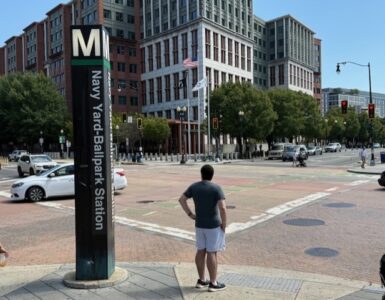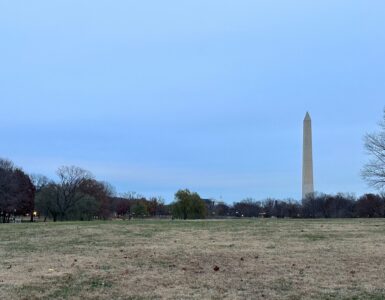By Sofia Marcus
At Mount St. Mary’s University (MSMU) in Los Angeles, the enrollment management team noticed a unique challenge for the 2024-2025 academic year. Despite a surge in applicants, fewer students ultimately enrolled.
“We ended up bringing a class that was similar to the size of the year before, which was a good year for us. So, by and large, we were happy with it. But it could have been better,” said Susan Dileno, vice president for enrollment management at MSMU, in a Zoom interview.
Despite increased marketing and recruitment efforts, MSMU faced challenges beyond their control. According to Dileno, it seemed like they were going to have a record year, but that was not the case.
This experience reflects a broader challenge faced by many institutions serving students across the country.
The 2024-2025 Free Application for Federal Student Aid (FAFSA) was plagued by reported delays and technical glitches, which many in higher education said created significant obstacles for students navigating the college admissions process.
Some students were not able to start or complete their applications, information entered into the form was found deleted, and incorrect details were displayed about students’ eligibility, according to the U.S. Government Accountability Office, an independent, nonpartisan government agency.
The completion rate of FAFSA forms was lower this year as a result, experts believe.
According to the National College Attainment Network, 46% of high school students who graduated in 2024 completed the FAFSA form — less than the record number of 53.4% of those who completed the FAFSA form in 2023.

“I think it’s likely that [students] were deterred entirely from completing the FAFSA because they ran into [difficulties] and felt that, without the aid that comes from completing the form, they wouldn’t be able to pay for college,” said Louisa Woodhouse, a senior policy associate at the National College Attainment Network, in a Zoom interview.
Not only were the delays a stressor for applicants, but so was the complexity of the FAFSA form itself. For many students, particularly those from low-income and first-generation backgrounds, navigating the form was a complicated task.
Connor Merchant, a freshman at American University studying sociology, described the FAFSA as a “prolonged stress.” He had to apply for the FAFSA because he is on the GI bill, a federal program providing aid to veterans and their families.
“It just added another item that I had to check off that I wasn’t able to because they kept delaying it,” Merchant said in a Zoom interview. “There were definitely parts where I had to consult my mother about what the question was asking because there were parts that were confusing.”
In 2021, Congress passed the FAFSA Simplification Act to make the process more accessible, to streamline the form, and to make it user-friendly for students and their families. Particularly for low-income and first-generation students, it sought to address barriers that discouraged completion of the form.
“The majority of our students [at MSMU] are first generation and about 70% of our incoming class are Pell [Grant] eligible. They’re in very high need,” Dileno said. “The FAFSA delays probably impacted their decision-making and their anxiety levels.”
While the FAFSA Simplification Act aimed to make the process more inclusive, certain groups still experienced significant barriers, especially for mixed-status families – where parents or guardians may not have U.S. citizenship.
According to government data projected by FWD.us, a criminal justice and immigration reform organization, 22 million U.S. residents are members of a mixed-status family. Around five million U.S. citizens under 18 years of age live with at least one undocumented parent, the data shows.
A new version of the FAFSA, called the ‘Better FAFSA,’ promised to expand opportunities of higher education and social mobility through a streamlined process for these students. However, it left students and their families to navigate delays and errors.
Without a Social Security number, the FAFSA wasn’t allowing parents to submit their information. For mixed-status students eligible to apply for aid, they were not able to complete the form because of this barrier.
“Without access to the FAFSA or with the challenges and delays that they may have encountered, we know that students had less certainty about the aid sources that were available to them,” Woodhouse said.
These challenges had far-reaching consequences. The decrease in FAFSA completion rates and uncertainty around financial aid eligibility are critical factors in the decision to attend college.
As a result, MSMU and other institutions across the country saw a drop in freshman enrollment.
According to the National Association of Student Financial Aid Administrators, full-time freshman enrollment during the 2024-2025 fall semester declined by 6.3%, while part-time freshman enrollment increased by 1.7%. Specifically, among 18 year olds, enrollment declined by 6%.

Katharine Meyer, a fellow in the Brown Center on Education Policy in Governance Studies at the Brookings Institution, said a lot of things went wrong with the FAFSA form that could explain the decline in freshman enrollment. Meyer said students were delayed in filling out the forms because it was not functional, or they were facing errors and needed to coordinate with a parent or guardian.
“There’s another bucket of students who tried or never went back [to] complete the form or heard that the process was so horrendous this year,” Meyer said in a Zoom interview.
For students delayed in the process, Meyer said they didn’t get information about their financial aid eligibility until much later in the decision-making cycle.
“A lot of students didn’t end up getting the FAFSA fully completed until the summer. And, when it came to making the decision about where to go, they were being asked to take a leap of faith that they would be able to afford an education at a given institution,” Meyer said.

Meyer believes this affected where students ended up enrolling and contributed to the drops in enrollment at universities.
For MSMU, it meant getting aggressive in building a larger applicant pool. Dileno emphasizes a hands-on approach to increase enrollment and outreach efforts, as MSMU is a smaller institution.
“We do a lot of virtual sessions with students and their families. It’s not just sending an email. We have to really do outreach and meet with them personally,” Dileno said.
Outreach efforts are of the utmost importance. For the Fair Opportunity Project, an education nonprofit based in Wisconsin, their focus is helping students from various backgrounds apply to and afford college.
“What we try to do a lot at the Fair Opportunity Project is have a very diverse team from different areas of the country and from different backgrounds. We constantly try to think about different student profiles,” said Cole Scanlon, co-founder and co-director of the Fair Opportunity Project, in a Zoom interview.
The average counselor to student ratio at public schools in the U.S. is almost 1 to 400. That’s why the Fair Opportunity Project established a FAFSA coaching program.
“We have students book 30 minutes to an hour repeatedly. [Our financial aid coaches] sit down with students and their parents and just walk them through the FAFSA,” Scanlon said. “You’d be amazed at the questions that are asked. Everything from privacy to just not understanding what this form is used for.”
Efforts to improve communication around the FAFSA process have been proven effective, addressing a key failure of the previous rollout.
“I feel like I’ve seen a lot better direct-to-student communication,” said Dr. Ellie Bruecker, director of research at The Institute for College Access & Success, in a phone interview. “A lot of organizations have put out guides for families, schools, high school counselors, and for students to help them figure out how to do this.”
These resources aim to simplify the process and reduce confusion ahead of the new FAFSA.
The 2025-2026 FAFSA launched on Nov. 21 – 10 days ahead of schedule. At a press conference hosted by the Department of Education on the launch day, the U.S. Secretary of Education, Dr. Miguel Cardona, attributed the successful release to four rounds of beta testing and months of hard work from Federal Student Aid and their partners.
“We got to work. We listened. We learned,” Cardona said at the press conference. “Last year’s FAFSA cycle was a challenging one with delays and frustrations. I felt those frustrations too, not only as secretary but as a former first-generation college student who today has two kids of his own in college.”
Despite a stressful 2024-2025 FAFSA rollout, experts are optimistic about what the future holds for the form.
“The FAFSA that is out now and available seems to be profoundly easier for students and families to fill out. Students have access to a form that is genuinely easier in that they don’t need as much information in order to fill it out,” Bruecker said. “That means we will see students having an easier time.”
Experts and advocates hope these changes will not only simplify the process but encourage more students to complete the FAFSA and enroll in higher education.
At MSMU, Dileno is hopeful that “it will be better this year.”















Add comment